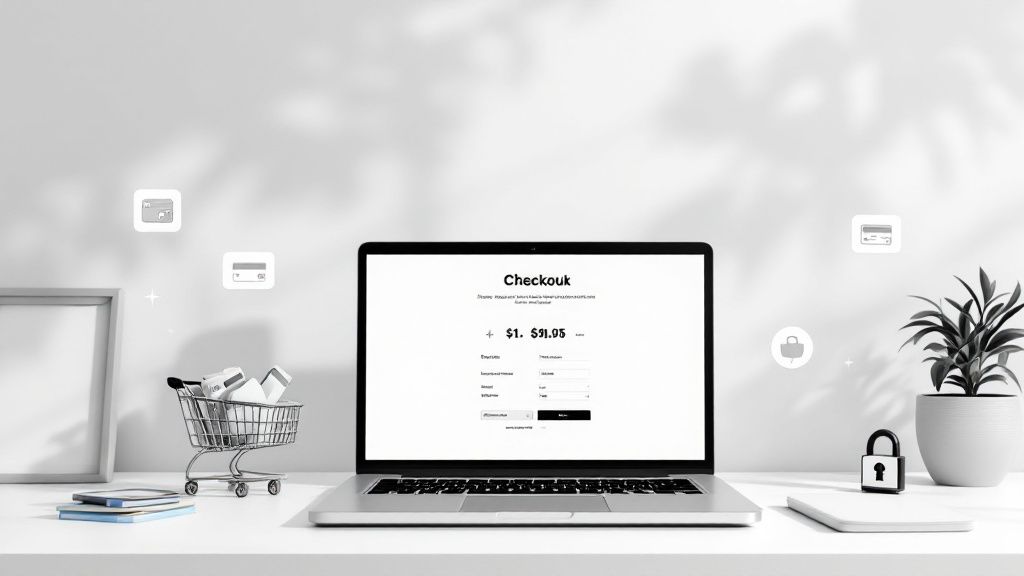Ultimate Shopping Cart Abandonment Solutions: Stop Losing Sales Today
February 3, 2025
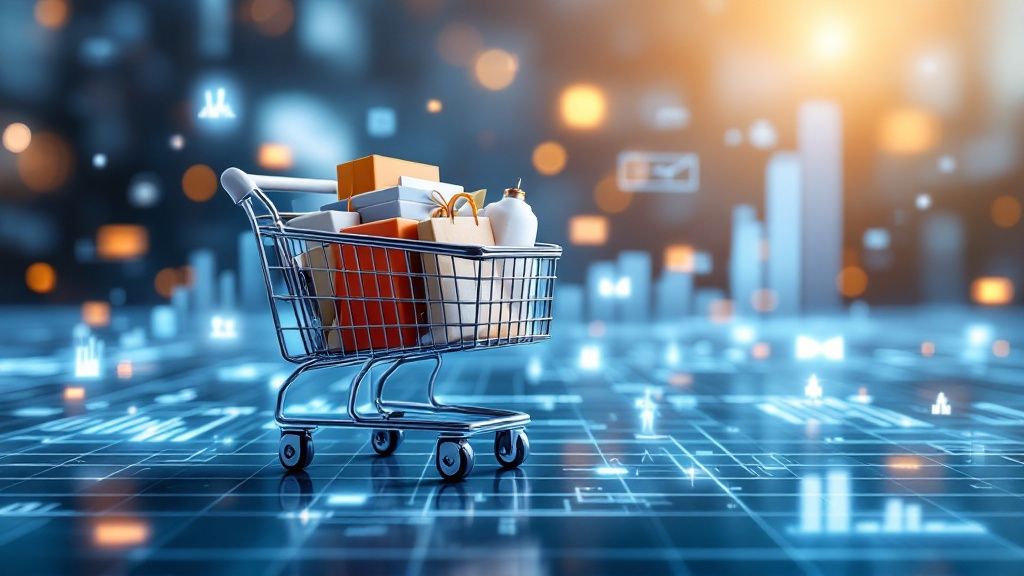
Understanding Cart Abandonment: The Modern Revenue Challenge
Online shopping continues to grow, but businesses face a significant hurdle: shopping cart abandonment. This happens when customers add items to their cart but leave without buying. While it may seem like a minor issue, cart abandonment leads to major revenue losses that affect businesses of all sizes.
The True Cost of Abandonment
Cart abandonment creates ripple effects beyond just losing an immediate sale. Think about the marketing costs already invested – paid ads, email campaigns, and website optimization efforts that successfully brought that customer to your site. When they abandon their cart, those marketing investments yield no return. Even worse, each abandoned cart represents a missed chance to gain a loyal customer who could make repeat purchases over time.
Decoding Customer Behavior
To solve cart abandonment, we first need to understand why it happens. Research shows several key factors drive customers away during checkout:
- Unexpected costs revealed late in the process
- Complex or lengthy checkout flows
- Limited payment options
- Security and trust concerns
For example, a shopper might be excited about a product until they see high shipping fees at the final step. Or they may hesitate to enter credit card details on a site without clear security indicators and trust badges.
The numbers paint a clear picture of this challenge. As of July 2024, 73.94% of online shopping carts are abandoned before purchase. This rate has fluctuated between a high of 74.95% in August 2023 and a low of 70.66% in December 2023. For more details, see Oberlo's cart abandonment statistics.
These statistics show that most businesses are losing the majority of potential sales during checkout. The good news? Strategic improvements to the checkout experience can help reclaim many of these lost sales. In the next section, we'll explore specific solutions to reduce cart abandonment and boost your revenue.
Industry-Specific Solutions That Drive Results
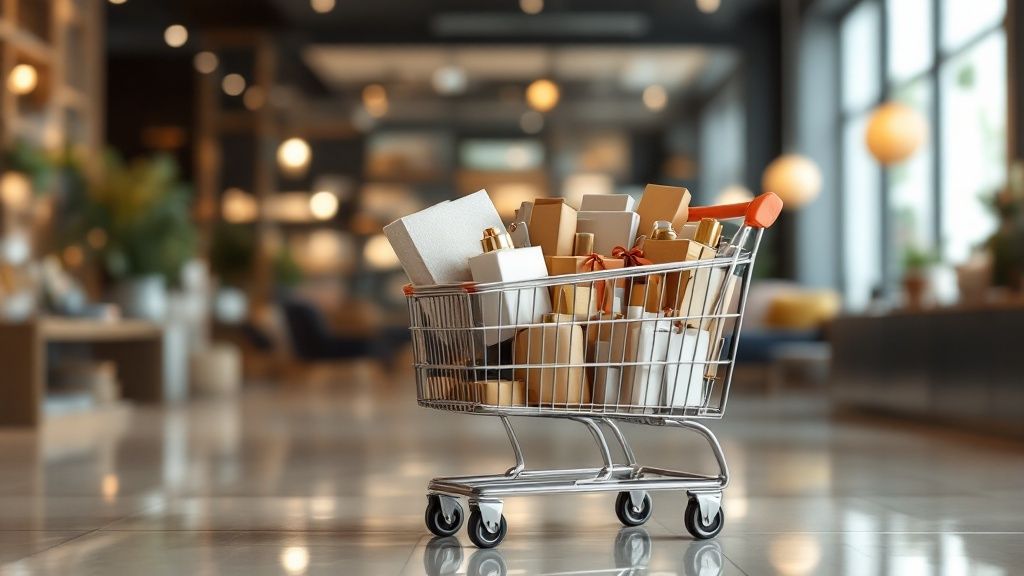
Effective shopping cart recovery requires understanding the unique needs of different industries. Customer behavior varies significantly depending on what's being purchased – buying pet food has very different motivations and urgency compared to shopping for luxury items. This directly impacts which abandonment solutions will work best.
The data shows striking differences in cart abandonment across industries. For instance, 82.84% of customers abandon luxury and jewelry purchases, while pet care sees much lower rates at 54.78%. Home & Furniture and Beauty & Personal Care also face significant challenges, with abandonment rates of 80.32% and 80.92% respectively. You can find more details about these trends here.
Targeting High Abandonment Industries: Luxury & Home Goods
For luxury items and home furnishings where prices are high and purchases require more consideration, building customer confidence is essential. Key strategies include:
- White-glove service: One-on-one consultations and dedicated support to address concerns
- Premium shipping options: Free delivery and expedited shipping to motivate purchases
- High-quality product visuals and descriptions: Detailed imagery and information that highlight value
Optimizing for Essential Purchases: Pet Care and Groceries
Essential purchase categories like pet supplies and groceries need a different approach focused on making repeat buying simple. Consider implementing:
- Subscription services: Easy recurring orders for regular customers
- Saved payment information: Quick checkout with securely stored preferences
- Personalized recommendations: Smart product suggestions to boost order size
Tailoring Your Approach Based on Purchase Complexity
The complexity of the purchase itself should guide your recovery tactics. Simple, low-cost items might only need a quick cart reminder email. But expensive, complex purchases often require more support – like personalized follow-up with customer service contacts and clear information about security and returns.
Combining these targeted strategies with tools like Checkout Links creates a smooth path back to purchase. These specialized links can restore abandoned carts, apply discounts, and streamline the checkout process. By reducing friction points and matching solutions to specific industry needs, you can effectively bring customers back to complete their purchases.
Mastering the Modern Checkout Experience
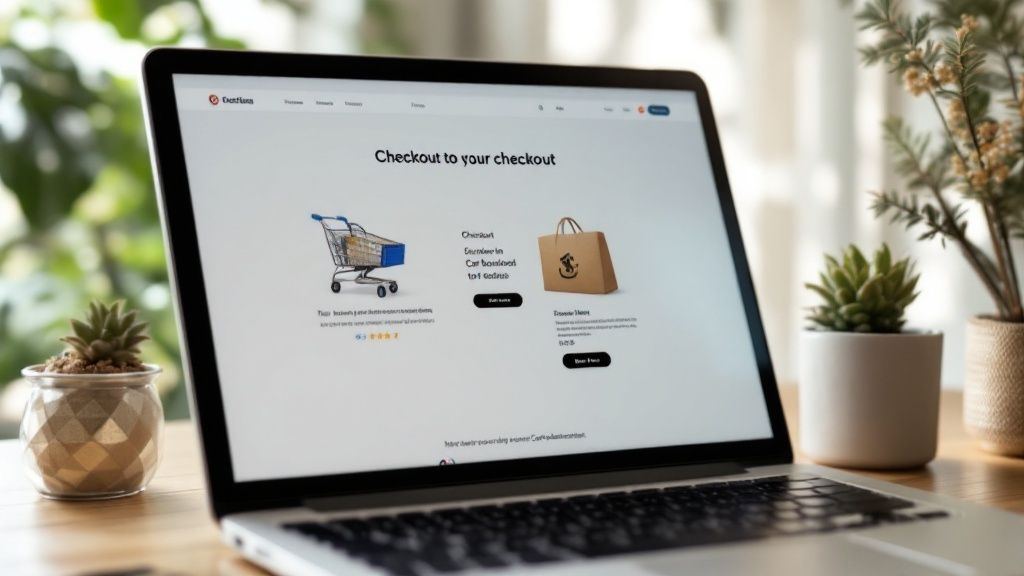
The checkout process can make or break an online sale. A smooth, well-designed checkout experience helps convert browsers into buyers, while a clunky one leads to abandoned carts. Understanding how shoppers think and what they need during checkout allows businesses to create an experience that drives sales.
Reducing Friction in the Checkout Process
When customers hit roadblocks during checkout – like lengthy forms or surprise fees – they often give up and leave. The key is removing these barriers while keeping the process simple. Progressive disclosure shows information only when needed, preventing overwhelm. Offering guest checkout lets customers complete purchases quickly without creating an account.
Optimizing the Mobile Experience
More people shop on phones than ever before, making mobile checkout design essential. Forms need to work smoothly on small screens with touch input. Buttons should be easy to tap and layouts should minimize scrolling. Getting the mobile experience right helps prevent customers from abandoning their purchase out of frustration.
Building Trust and Security
Many shoppers abandon carts due to security worries. While trust badges from security providers can help reassure customers, overly complex security measures can drive them away. For example, requiring too many authentication steps creates friction. The goal is balancing security with convenience through clear communication about how customer data is protected.
Implementing Smart Form Design and Micro-Interactions
Well-designed checkout forms make a big difference. Features like auto-fill and real-time validation help customers complete forms quickly and correctly. Small visual cues like progress indicators and subtle animations, called micro-interactions, guide customers through each step. Pre-filled carts and automatic discount application through Checkout Links streamline the process even further. These details may seem minor but they work together to create a checkout experience that converts browsers into buyers.
Building Powerful Cart Recovery Campaigns

Getting customers back to complete their abandoned purchases takes more than just a basic reminder email. The key is thoughtfully re-engaging shoppers through personalized messages across multiple channels, delivered at the right moments. Let's explore proven strategies to recover those lost sales.
Crafting Compelling Recovery Emails
Email continues to be one of the most effective tools for cart recovery. A carefully planned sequence can successfully remind customers about items they liked and guide them to purchase. Start with a gentle reminder within the first hour showing their cart contents and offering help. Follow up emails can introduce incentives like free shipping. Personalizing each message with the customer's name and specific product details significantly improves response rates.
Retargeting: Bringing Customers Back
Smart retargeting shows ads to customers who left items in their cart as they browse other sites. These visual reminders featuring abandoned products can effectively bring shoppers back to complete their purchase. For even better results, use dynamic retargeting to display personalized product recommendations based on each customer's browsing history and interests.
Timing is Everything: Optimizing Your Approach
The timing of recovery messages greatly impacts their success. Send messages too quickly and you risk appearing pushy; wait too long and you lose momentum. A proven approach is:
- First email within 1 hour of abandonment
- Second email after 24 hours
- Final email with time-sensitive offer after 72 hours
Automation and Personalization: A Powerful Duo
Automated workflows help scale recovery efforts efficiently. Tools like Checkout Links let you create personalized cart links that automatically apply discounts and restore abandoned items. This removes friction and makes it easier for customers to complete their purchase. Learn more in our article about How to master cart abandonment. Regular A/B testing of different subject lines, messages and offers helps optimize campaigns for the best possible conversion rates. By combining automation with personalized messaging, you can build highly effective campaigns that successfully recover abandoned carts.
Leveraging AI and Automation for Cart Recovery
The rise of artificial intelligence (AI) and automation has created powerful new ways to prevent and recover abandoned shopping carts. Rather than just reacting after customers leave, businesses can now take proactive steps to keep shoppers engaged through the checkout process.
AI-Powered Personalization
Smart AI systems study how customers browse and buy, learning their preferences over time. This enables targeted product suggestions that feel natural and helpful. For example, if someone leaves running shoes in their cart, the system might send an email featuring related items like moisture-wicking socks or running shorts – items the customer is likely to be interested in based on their shopping history.
Predictive Analytics and Behavioral Tracking
Modern AI goes beyond basic recommendations by spotting signs that someone might abandon their cart. By analyzing patterns like how long shoppers spend viewing products and which pages they visit, AI can identify at-risk customers. This allows businesses to send well-timed offers, like a special discount code, before the customer leaves – often preventing abandonment altogether.
Choosing the Right Technology Stack
Small businesses don't need complex systems to use AI effectively. Many user-friendly platforms like Shopify integrate AI-powered features out of the box. Cart recovery tools can automatically create personalized links that restore abandoned items and apply discounts, making it simple for customers to complete their purchase.
Automation That Works Smarter, Not Harder
Automated email sequences take the manual work out of cart recovery. The first message might arrive within an hour, simply reminding customers about items they left behind. Later emails can highlight product benefits or offer incentives to complete the purchase. This systematic approach engages customers efficiently without requiring constant oversight.
Balancing Personalization with Privacy
While AI needs customer data to work effectively, protecting privacy is essential. Being transparent about data collection and giving customers control over their information builds trust. Clear privacy policies and simple opt-out options show respect for customer preferences.
Measuring the ROI of Your Tech Investment
Track specific metrics to understand how AI and automation affect your bottom line. Focus on recovered revenue, conversion rates, and customer lifetime value. Use this data to refine your approach and ensure your technology investments deliver real returns. When implemented thoughtfully, AI tools can significantly reduce cart abandonment and boost sales.
Implementation Blueprint and Success Metrics
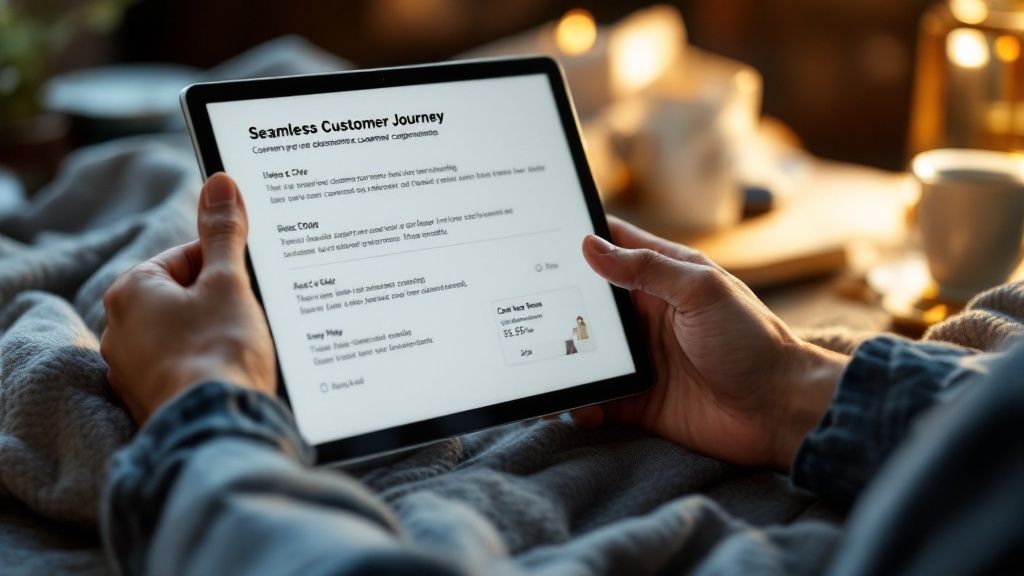
Tackling shopping cart abandonment requires a well-planned approach with clear goals and measurements. Without a structured plan, even the best tactics can fall short. Let's explore how to build an effective implementation strategy and track its success.
Prioritizing Improvements: Where to Start
Start by examining your current checkout process to find the main pain points causing customers to leave. Are they abandoning because shipping costs are too high? Is the checkout process confusing? Or do you need more payment options? For deeper insights into tracking abandonment, check out How to master Shopify Analytics. Focus first on fixing the issues that will have the biggest impact on your abandonment rate. For example, if most customers leave during payment, make optimizing that step your top priority.
Setting Realistic Implementation Timelines
Success takes time and patience. Break down your plan into smaller, achievable steps. Some changes, like improving your checkout form, might take a week. Others, such as adding new payment options, could need several weeks. Setting clear timelines helps you stay on track and measure progress effectively.
Key Performance Indicators (KPIs) for Success
To know if your solutions are working, track these essential metrics:
- Cart Abandonment Rate: What percentage of customers leave without buying
- Recovery Rate: How many abandoned carts you successfully recover
- Average Order Value (AOV): The typical amount customers spend per order
- Revenue Recovered: Total sales generated from recovered carts
These numbers tell you what's working and what needs improvement.
Testing and Iteration: A Continuous Process
Making improvements is an ongoing journey, not a one-time fix. Test different approaches – try various email subject lines, recovery messages, and special offers to see what your customers respond to best. Keep checking your metrics and adjust your strategy based on real results. This helps ensure your shopping cart abandonment solutions stay effective as customer needs change.
Building a Sustainable Cart Recovery Program
Long-term success requires clear processes, trained team members, and flexibility to adapt as markets evolve. Write down your procedures, ensure your team understands them, and regularly update your approach based on customer behavior. This helps create lasting improvements in cart recovery and sales.
Ready to turn more abandoned carts into completed sales? Checkout Links provides tools designed to help you recover lost revenue and grow your business. Get Started with Checkout Links today and see the results for yourself.
 Checkout Links
Checkout Links


